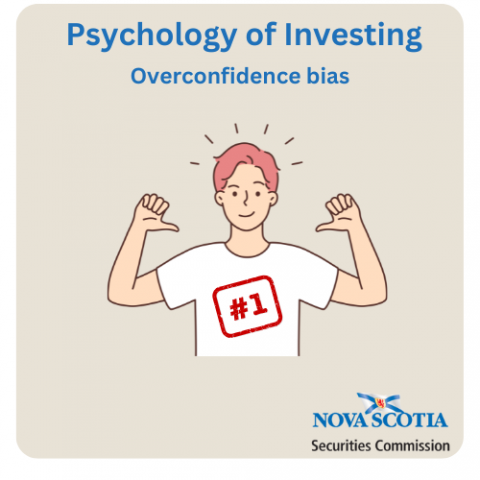Submitted by nsscadmin on

The third part of our Psychology of Investing series takes a closer look at overconfidence bias. Overconfidence can be extremely dangerous when you’re investing as it can lead to financially harmful decisions that can affect your short and long-term financial situation.
Overconfidence bias occurs when someone is excessively confident in their abilities and/or the decisions they are making. They will overestimate their abilities even when presented with evidence or measurement to show that they are not truly as good as they believe.
Overconfident investors believe they have the skill to create a portfolio or make investing picks that will outperform other people’s portfolios and often the market itself. Trying to beat the market is often where overconfident investors learn the hard way that they’re not as skilled as they believe. Historically, even professional advisers cannot consistently beat the market.
Making a solid investment pick that turns out to be profitable can sometimes lead to overconfidence. “I picked a winner last time, so I can do it again repeatedly,” is often a reprieve made by many overconfident investors. A lengthy bull market can also lead to overconfident investors, as the market conditions may have more to do with their success than their actual skill and knowledge.
If you’ve lost money due to overconfidence before or think you may be susceptible to this bias, here are a few ways to protect yourself from overconfidently bankrupting yourself.
Could you be wrong? – No one is right 100 percent of the time no matter what they’re doing, whether they’re investing or picking who’s going to win tonight’s big game. Even if you feel 100 percent certain about an investment, take a minute to pause and reflect on why you think it’s the right decision.
Look at the data – Research is the most important step when it comes to choosing investments. Don’t overlook any information or over inflate your own skill or knowledge when the data opposes it.
Ask someone for help – Before buying that investment you think can’t miss, explain your rationale for the purchase to someone else. Explain your thinking and see if they agree with your reasoning and outlook.
Our series on the psychology of investing continues in two weeks with Part 4 which looks at loss aversion.
